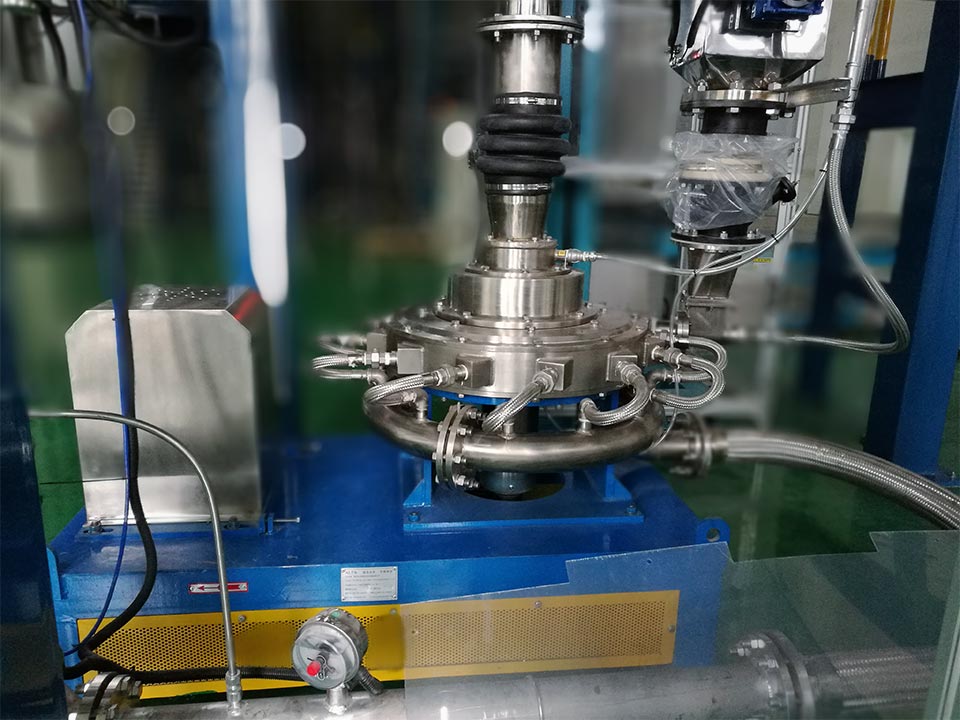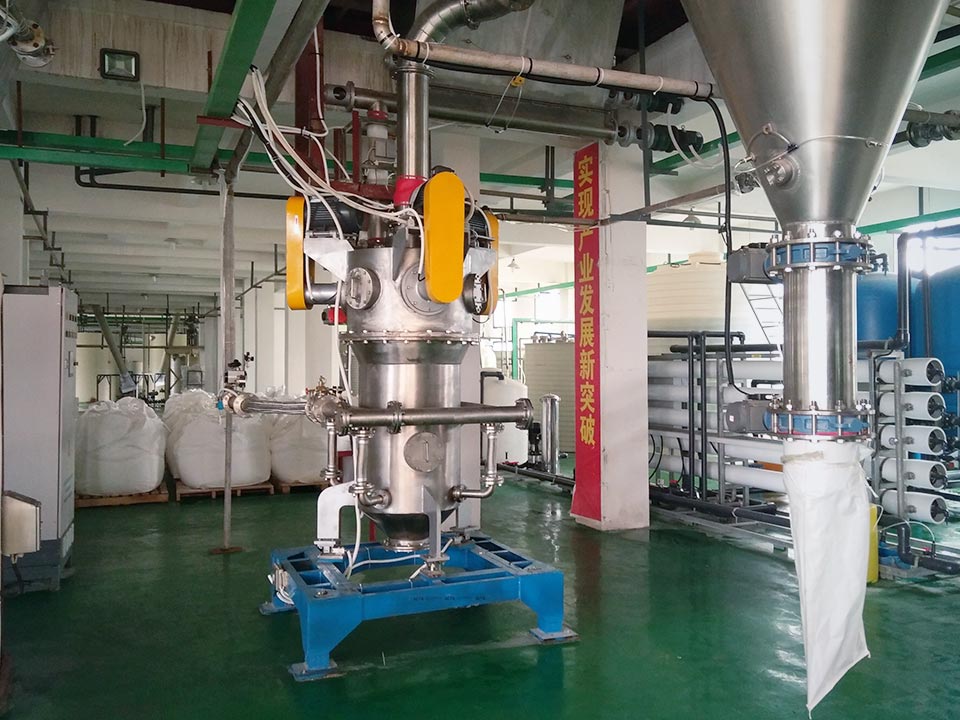Detailed description of jet mill
The jet mill is a device that uses high-speed airflow to achieve ultra-fine grinding of dry materials. It has a high full utilization rate of jet energy and has significant performance advantages such as no heating, no pollution, low wear and high precision. It is widely used in ultra-fine crushing of low-temperature, high-purity and high-hardness materials. For materials that are flammable, explosive, and easy to oxidize, inert gas can be used as a medium to achieve closed-circuit crushing, and the inert gas can be recycled.
The jet mill is composed of a jet mill, cyclone collector, dust collector, induced draft fan, electric control cabinet and other parts of a complete set of crushing system. After the compressed air is filtered and dried, it is sprayed into the pulverizing cavity at a high speed through the Laval nozzle. At the intersection of multiple high-pressure airflows, the materials are repeatedly collided, rubbed, and sheared to be pulverized. The pulverized materials enter the grading cavity with the ascending airflow. Under the action of the centrifugal force generated by the high-speed classification impeller and the centripetal force generated by the airflow, the coarse and fine particles are separated. The fine particles meeting the particle size requirements enter the cyclone collector and the dust collector through the gap of the classification impeller blades, and the coarse particles are thrown out by the classification impeller. Descend to the crushing area to continue crushing.
Currently widely used jet mills include flat jet mills, fluidized bed jet mills, and circulating tube jet mills.
The flat jet mill is used as a high-pressure airflow of smashing kinetic energy to enter the pressure-stabilized air storage bag outside the pulverizing cavity as an air distribution station. The airflow is accelerated into a supersonic airflow through the Laval nozzle and then enters the pulverizing mill cavity. Because the Laval nozzle and the crushing cavity are installed at an acute angle, the high-speed jet stream carries the animal material in the crushing cavity to make a cyclic movement, and the particles and the wall of the fixed target plate collide, collide and rub against each other to crush. The fine particles are guided by the centripetal airflow into the center outlet pipe of the crusher and enter the cyclone separator for collection. The coarse powder is thrown to the peripheral wall of the crushing chamber under the action of centrifugal force to make a circular motion and continue to be crushed.

The fluidized-bed jet mill is a process where compressed air is accelerated by Laval nozzles into supersonic airflow, and then injected into the crushing zone to make the material fluidized (the airflow expands into a fluidized bed suspension and boiling and collides with each other), so each particle Have the same state of motion. In the crushing zone, the accelerated particles collide and crush at the intersection of the nozzles. The crushed materials are transported to the grading area by the ascending airflow, and the fine powder that meets the particle size requirements is screened out by the grading wheel, and the coarse powder that does not meet the particle size requirements is returned to the pulverizing area to continue pulverization. The qualified fine powder enters the high-efficiency cyclone separator along with the air flow to be collected, and the dust-containing gas is filtered and purified by the dust collector and discharged into the atmosphere.

The raw materials of the circulating tube jet mill are fed into the crushing chamber by nozzles, and the high-pressure air flow is sprayed into the racetrack-shaped circulating tube crushing chamber with unequal diameter and variable curvature through a set of nozzles, accelerating the particles to collide, collide and rub each other to crush. At the same time, the swirling flow also drives the crushed particles upwards into the classification zone along the pipeline, and the dense material flow is divided under the action of the centrifugal force field in the classification zone, and the fine particles are discharged after being classified by the louver-type inertial classifier in the inner layer. The coarse particles return along the descending pipe in the outer layer and continue to circulate and crush.
Jet mills are widely used in industries such as chemical industry, minerals, metallurgy, abrasives, ceramics, refractory materials, medicine, pesticides, food, health products, new materials and so on. This is inseparable from its remarkable performance advantages. The performance characteristics of the jet mill are as follows:
1. Variable combination structure: one machine for two purposes, which can be crushed or graded separately;
2. Multi-stage cascade: It can be connected with 1-5 classifiers to produce products with narrow particle size distribution;
3. Wide range of crushing particle size: The particle size of the finished product can be adjusted between D97=3-150 microns, and the particle shape is good;
4. The whole system is sealed and crushed, with less dust, low noise, and the production process is clean and environmentally friendly;
5. The program control system is adopted, and the operation is simple.
